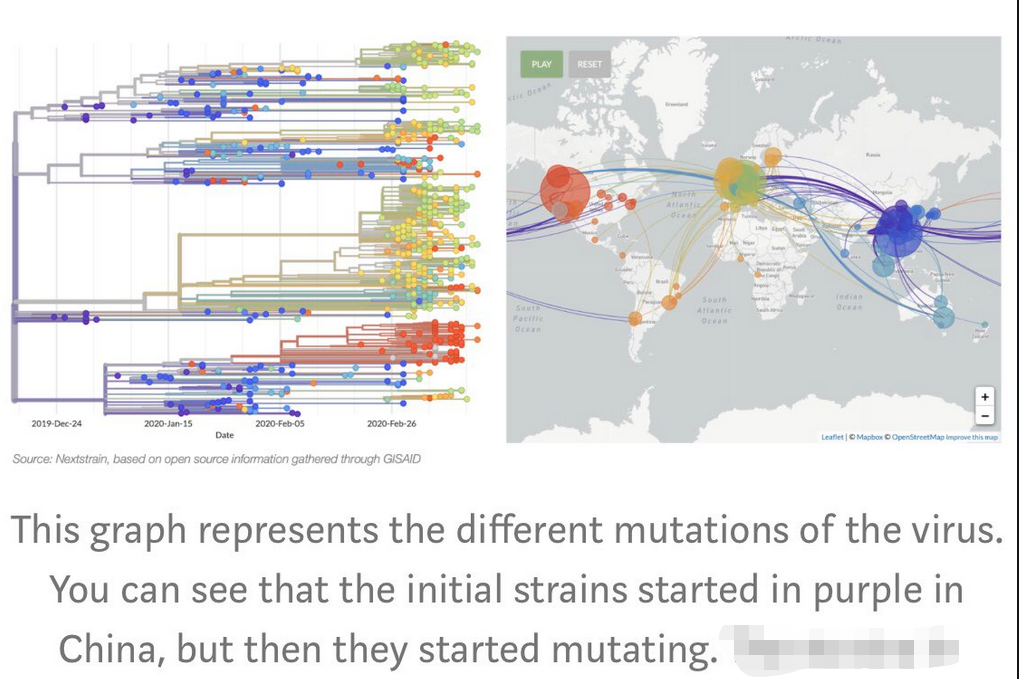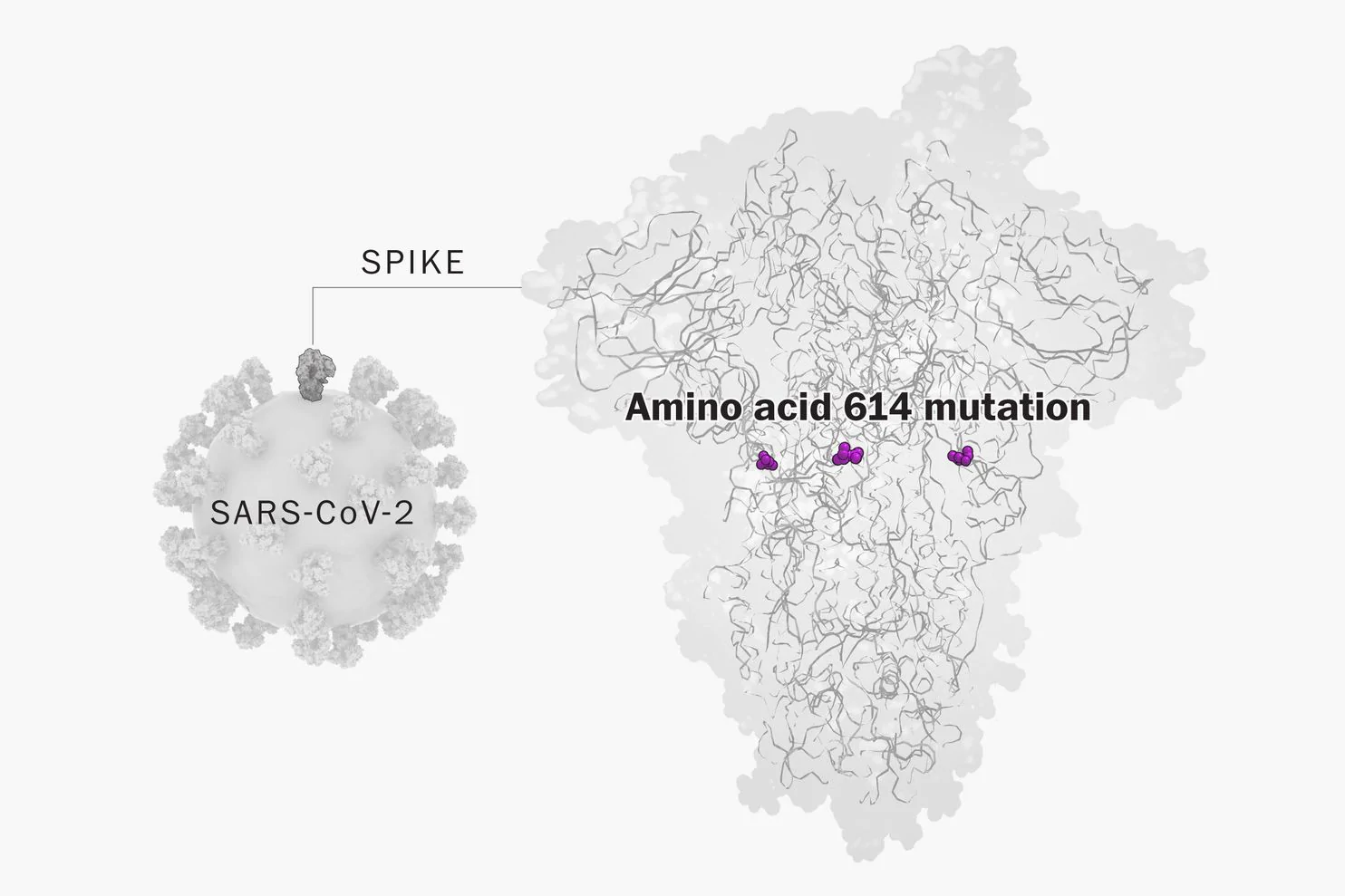Coronavirus: The Mutating of Coronavirus

In the global action against the novel coronavirus epidemic, human beings have learned more and more about this deadly virus. According to a paper published recently in the Proceedings of the National Academy of Sciences, the current novel Coronavirus has developed three subtypes based on the immunity of different populations. Academician Zhong Nanshan also said that the new coronavirus has adapted to the human environment through mutation, and then it has become increasingly infectious. What impact will the constant mutation of the new corona virus have? Will there be “super variants” as they worry online?
Let us see some different voices.
On June 1, WHO chief scientist Sumia Swaminathan said in a regular press conference on novel coronavirus, that global scientists cooperate to share viral genes, and there are currently more than 32,000 novel coronavirus genes Sequence, and also update knowledge about the mutations that are emerging in the virus.
Sumiya Swaminathan said that virus mutations are expected because the RNA viruses to which the novel coronavirus belongs will continue to mutate, but current evidence shows that the virus mutation has nothing to do with the ability of spread.
In an article of COVID19Zone.info, the mutation of Coronavirus was talked long time ago, and as studied and researched by Chinese experts, warning of more infections of coronavirus mutating may happened.
- Disposable Medical Face Masks with Elastic Ear Loop 3 Ply Breathable and Comfortable
- Disposal Protective Clothing for Medical Use
- N95/KN95 Protective Mask with Elastic Ear Loop
- Surgical Mask with Elastic Ear Loop 3 Ply Breathable and Comfortable
- ZeroVirus Space Portable Sterilization Bar
Scientists said that they have identified a new variant of coronavirus, which means that more easily transmitted viruses have swept the world and may even reinfect those who already have antibodies.
According to a report by Sky News and CNBC News on the 5th, researchers at the Los Alamos National Laboratory in the United States have discovered that the “synthetic spike protein” of the new coronavirus is produced. There are 14 kinds of mutations, and the spike protein named Spike D614G is the most worrying.
The research paper pointed out that this mutant new pneumonia virus strain began in early February, spread from Europe to the United States and Canada and other parts of the world, and became the major virus sweeping the world by the end of March.
Research warns that if this virus strain does not subside in the summer like seasonal flu, it may further mutate, and the vaccines developed by scientists have limited efficacy. Due to the urgent problem, this research paper is presented before peer review. Computational biologist Bette Korber, the lead author of the paper, said that this is bad news. In order to prevent and treat the new coronavirus, more than 100 kinds of vaccines are currently under development.
Recently, researchers from Zhejiang University discovered in the latest research that the new coronavirus has mutated at least 30 virus strains. The virus strains in mainland China and Europe are more deadly than those in the United States.
Researchers from the National Center for Clinical Research of Infectious Diseases, the State Key Laboratory of Infectious Diseases Diagnosis and Treatment, the First Affiliated Hospital of Zhejiang University School of Medicine, and the Institute of Life Sciences of Zhejiang University, under the leadership of Academician Li Lanjuan, studied virus isolation from 11 patients The functional characteristics of the organisms were found to have at least one mutation. Related research results were recently published on the preprint platform medRxiv. The study is titled “Patient-derived mutations impact pathogenicity of SARS-CoV-2”.

About 70% of the 50,000 genomes of the coronavirus that was uploaded by researchers have undergone mutations.
Researchers from Northwest University’s medical school in Chicago believe that mutation in the coronavirus has made it considerably more contagious.
At first glance, the mutations seemed trivial. About 1,300 amino acids serve as building blocks for a protein on the surface of the virus. But the locations of the mutation is significant because the switch occurred in the part of the genome that codes for the all-important “spike protein”, The Washington Post reported.
The researchers found that these virus isolates showed significant differences in cytopathic effects and viral load, up to 270 times. Various evidence shows that the new coronavirus has acquired mutations and can significantly change its pathogenicity.
The researchers analyzed that the most deadly mutations were found in patients from China, Spain, Italy and New York. The virus volume of the most virulent virus strains is 270 times that of the mildest virus strains, and the most mild virus strains are mostly found in American patients out of New York.
COVID-19-causing viral variant taking over in the United States and Europe now carries more functional, cell-binding spikes.

A tiny genetic mutation in the SARS coronavirus 2 variant circulating throughout Europe and the United States significantly increases the virus’ ability to infect cells, lab experiments performed at Scripps Research show.
“Viruses with this mutation were much more infectious than those without the mutation in the cell culture system we used,” says Scripps Research virologist Hyeryun Choe, PhD, senior author of the study.
The mutation had the effect of markedly increasing the number of functional spikes on the viral surface, she adds. Those spikes are what allow the virus to bind to and infect cells.
“The number—or density—of functional spikes on the virus is 4 or 5 times greater due to this mutation,” Choe says.
The spikes give the coronavirus its crown-like appearance and enable it to latch onto target cell receptors called ACE2. The mutation, called D614G, provides greater flexibility to the spike’s “backbone,” explains co-author Michael Farzan, PhD, co-chairman of the Scripps Research Department of Immunology and Microbiology.
More flexible spikes allow newly made viral particles to navigate the journey from producer cell to target cell fully intact, with less tendency to fall apart prematurely, he explains.
“Our data are very clear, the virus becomes much more stable with the mutation,” Choe says.
There has been much debate about why COVID-19 outbreaks in Italy and New York have so quickly overwhelmed health systems, while early outbreaks in places like San Francisco and Washington state proved more readily managed, at least initially. Was it something about those communities and their response, or had the virus somehow changed?
All viruses acquire minute genetic changes as they reproduce and spread. Those changes rarely impact fitness or ability to compete. The SARS-CoV-2 variant that circulated in the earliest regional outbreaks lacked the D614G mutation now dominating in much of the world.
